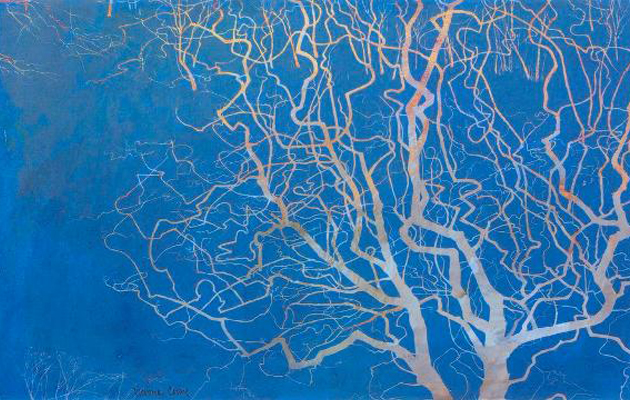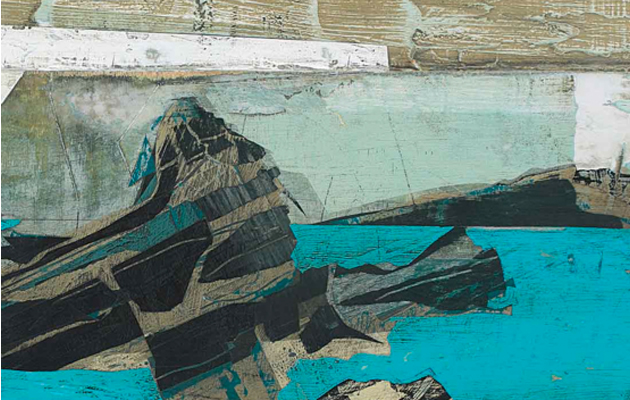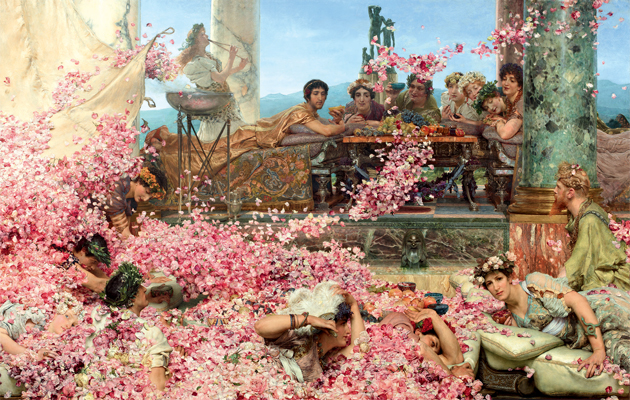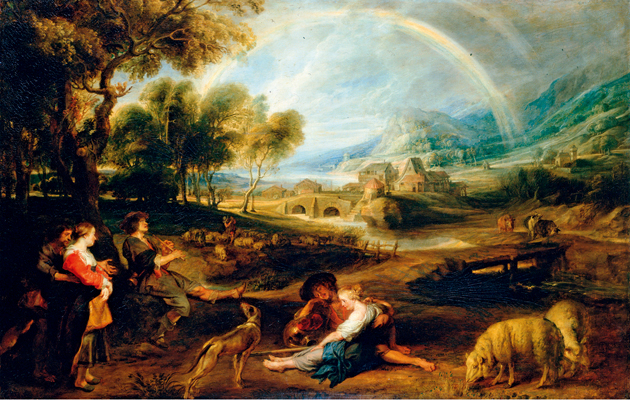Exhibition review: Victoria Crowe Winter Sequence
Lilias Wigan reviews an exhibition of Victoria Crowe’s recent works that reflect her wintry vision and the changing effects of seasonal light.


Browse and Darby’s current exhibition is a 20 piece selection of Victoria Crowe’s works that explore the effects of changing winter light on landscape and trees. Daylight, twilight, snowstorms, misty dusk and moonlight are depicted in an eclectic mix of monoprints, ink drawings, collages and paintings that convey this wintry vision.
Victoria Crowe was born in Kingston-upon-Thames and studied at the Kingston School of Art from 1961-65, and then at the Royal College of Art in London from 1965-68. At her postgraduate show she met Sir Robin Philipson, an encounter that led to her 30-year career as a lecturer at Edinburgh college of Art. A member of the Royal Scottish Academy (RSA) and the Royal Scottish Society of Painters in Watercolours (RSW), she has won numerous awards, including an OBE, and is regarded as one of Scotland’s leading artists. The RSA Sir William Gillie Bequest Award enabled her to travel to Venice to pursue her horticultural interests among the city’s extensive archives of historic plant collections and she now spends part of her time there, while her main home is in the Scottish Borders.
Crowe’s artistic practice spans landscapes, still lifes, portraits, self-portraits and interiors. She tends to defy any specific categorisation - and this exhibition is no exception - although her overarching theme is the natural world. In her tree paintings, she intensifies form and movement so that branches jerk out unpredictably and scraggly, vein-like twigs twist and turn against the gently layered hues of sky. Duncan Macmillan describes them in his monograph as ‘numinous pictures; they are spiritual landscapes’.
The textural quality of Crowe’s monoprints is suberb. She makes drawings in ink or oils onto a smooth plate and then presses them by hand onto absorbent paper or an etching press. She uses a rich and varied palette, layering complex ground colours and sometimes using carborundum (silicon and carbon) to produce the distinct, grainy textures that communicate so effectively the harshness of winter. She layers paper to create rivets, and spatters paint onto the surface, often with a faint glitter.
Sunlight reflects off the snow and back onto the body of a tree in Strong Winter Sunlight, creating a tension between warmth and coolness. Progressing through time, we come to Evening, Low Fiery Sun, in which a tree seems to be inflamed by the sinking sun. Approaching Winter is Crowe’s homage to the artist Mondigliani, a response to his 1915 portrait of Rosa Porprina. An Italian woman hovers in a brown band of colour and there’s an inscription of verse from a diary entry that speaks of a particularly bad winter, a ‘great silence everywhere.’ Similarly unexpected is Reflection on Winter, London Plane, a meditation on the relationship between humans and nature in which a bleak landscape is interrupted by a window with the reflection of a woman looking out onto the austere scene.
One of Crowe’s autumnal monotypes is Changing Skies, in which the predominant umber hues are threatened by the chill of blue and lilac, presaging the winter to come. Her etching Large Tree Group, Winter links this exhibition with From Fleece to Fibre, the making of the Large Tree Group Tapestry, currently on show at the Fleming Collection.
‘Victoria Crowe: Winter Sequence’ is at Browse & Darby, 19 Cork Street, London W1 until the 13th February. www.browseanddarby.co.uk
Sign up for the Country Life Newsletter
Exquisite houses, the beauty of Nature, and how to get the most from your life, straight to your inbox.

Credit: ©Jeremy Gardiner 2007
The best art exhibitions opening in January
Read our comprehensive list of the best art exhibitions around the country that opened in the past month.

Exhibition review: 'A Victorian Obsession: The Pérez Simón Collection'
Matthew Dennison reviews an exhibition dedicated to Pérez Simón's collection at Leighton House.

Exhibition review: Rubens and His Legacy at the Royal Academy in London
David Howarth reviews a major new exhibition at the Royal Academy.
Country Life is unlike any other magazine: the only glossy weekly on the newsstand and the only magazine that has been guest-edited by HRH The King not once, but twice. It is a celebration of modern rural life and all its diverse joys and pleasures — that was first published in Queen Victoria's Diamond Jubilee year. Our eclectic mixture of witty and informative content — from the most up-to-date property news and commentary and a coveted glimpse inside some of the UK's best houses and gardens, to gardening, the arts and interior design, written by experts in their field — still cannot be found in print or online, anywhere else.
-
 Designer's Room: A solid oak French kitchen that's been cleverly engineered to last
Designer's Room: A solid oak French kitchen that's been cleverly engineered to lastKitchen and joinery specialist Artichoke had several clever tricks to deal with the fact that natural wood expands and contracts.
By Amelia Thorpe
-
 Chocolate eggs, bunnies and the Resurrection: Country Life Quiz of the Day, April 18, 2025
Chocolate eggs, bunnies and the Resurrection: Country Life Quiz of the Day, April 18, 2025Friday's quiz is an Easter special.
By James Fisher